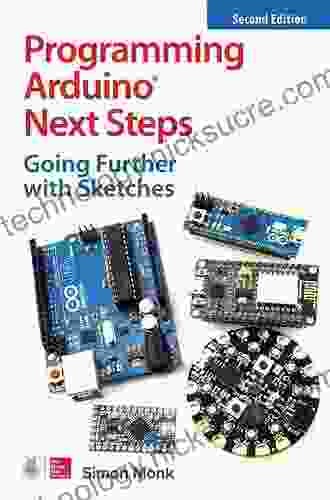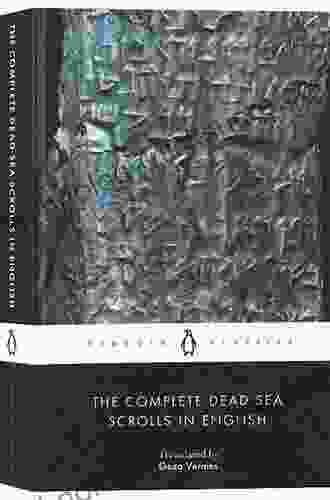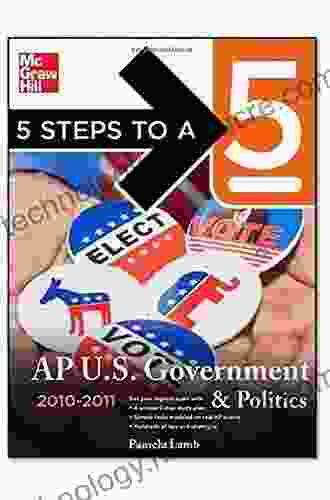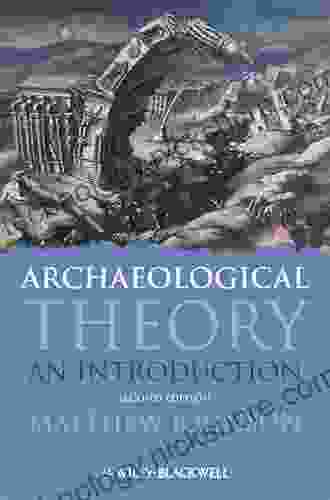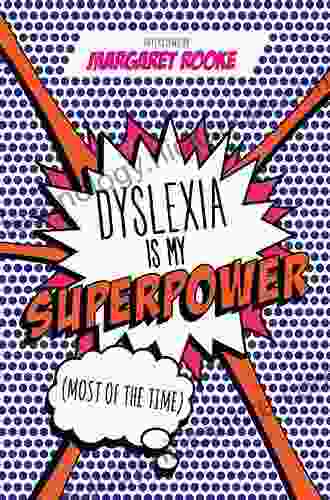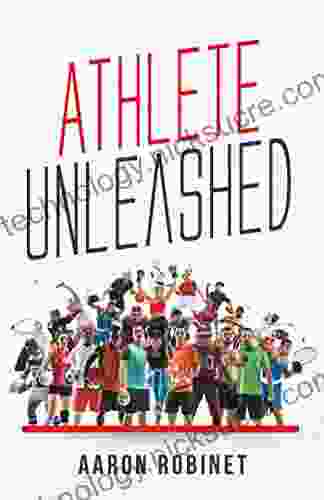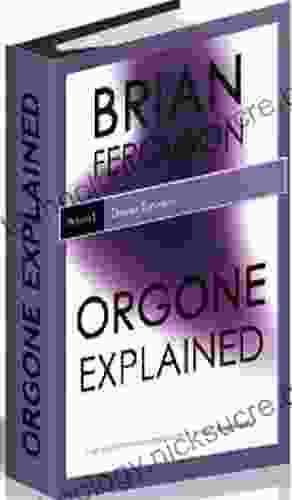Advanced Programming for Arduino: Next Steps for Embedded Systems Mastery

Arduino, the open-source microcontroller platform, has revolutionized the world of embedded systems development. With its user-friendly programming environment and vast community support, Arduino has become a go-to tool for makers, hobbyists, and professionals alike.
4.6 out of 5
| Language | : | English |
| File size | : | 21000 KB |
| Text-to-Speech | : | Enabled |
| Screen Reader | : | Supported |
| Enhanced typesetting | : | Enabled |
| Print length | : | 320 pages |
While the basics of Arduino programming are relatively straightforward, mastering advanced concepts is essential for unlocking the full potential of your embedded systems projects. This article will delve into the intricacies of advanced Arduino programming, providing a comprehensive guide to enhance your skills and push your projects to the next level.
Advanced Programming Concepts
1. Interrupt Service Routines (ISRs)
Interrupts are external events that can halt the normal execution of your Arduino program and trigger a specific response. ISRs are functions that handle these interrupts, allowing your program to react promptly to external stimuli.
For example, you can use an ISR to respond to a button press or a sensor reading. By handling interrupts efficiently, you can ensure that your Arduino system reacts in real time to changes in its environment.
2. Serial Communication Protocols
Serial communication allows your Arduino to exchange data with other devices, such as computers, sensors, and actuators. Advanced programming involves mastering various serial communication protocols:
- UART (Universal Asynchronous Receiver/Transmitter): A simple and widely used protocol for transmitting data one bit at a time.
- I2C (Inter-Integrated Circuit): A low-power, two-wire protocol for connecting multiple devices on a single bus.
- SPI (Serial Peripheral Interface): A high-speed protocol for connecting multiple devices in a master-slave configuration.
3. Data Structures and Algorithms
As your Arduino projects become more complex, it becomes crucial to organize and manipulate data efficiently. Data structures and algorithms provide the tools to store, retrieve, and process data in structured ways:
- Arrays: Collections of elements of the same data type that can be accessed using an index.
- Linked lists: Sequences of dynamically allocated nodes, where each node stores a value and a pointer to the next node.
- Sorting algorithms: Methods for organizing data in ascending or descending order, such as bubble sort, quicksort, and merge sort.
- Search algorithms: Techniques for finding a specific element within a data structure, such as linear search and binary search.
4. Object-Oriented Programming (OOP)
OOP is a paradigm that allows you to organize code into classes and objects. This approach promotes code reusability, maintainability, and modularity:
- Classes: Blueprints that define the properties and methods of objects.
- Objects: Instances of classes that can be created and manipulated during runtime.
- Inheritance: A mechanism for creating new classes that inherit the properties and methods of existing classes.
- Polymorphism: The ability for objects to respond to the same messages in different ways, depending on their class.
5. Embedded Networking
Connecting your Arduino to a network opens up a wide range of possibilities for data sharing, remote control, and Internet of Things (IoT) applications. Advanced programming involves mastering networking concepts such as:
- TCP/IP (Transmission Control Protocol/Internet Protocol): The foundation of the Internet, defining how data is transmitted and routed.
- Ethernet: A wired networking technology that provides high-speed data transfer.
- Wi-Fi: A wireless networking technology that allows for wireless communication between devices.
Practical Applications
The advanced programming concepts discussed in this article can be applied to a wide range of practical applications:
- Home automation: Control lights, appliances, and temperature from anywhere using your Arduino and mobile phone.
- Robotics: Build robots that can navigate complex environments, avoid obstacles, and respond to voice commands.
- Data acquisition and analysis: Collect and analyze data from sensors in real time, monitoring environmental conditions or machinery status.
- IoT devices: Create connected devices that can communicate with each other and cloud platforms, enabling remote monitoring and control.
Mastering advanced programming concepts for Arduino empowers you to develop sophisticated embedded systems projects that can revolutionize your life and work. By leveraging interrupts, serial communication, data structures, OOP, and embedded networking, you can unlock the full potential of your Arduino and push the boundaries of embedded systems innovation.
Remember, the journey to becoming an advanced Arduino programmer is an ongoing process that requires dedication, experimentation, and a willingness to learn. Embrace the challenge, delve into the intricacies of embedded systems, and unleash your creativity to build remarkable projects.
4.6 out of 5
| Language | : | English |
| File size | : | 21000 KB |
| Text-to-Speech | : | Enabled |
| Screen Reader | : | Supported |
| Enhanced typesetting | : | Enabled |
| Print length | : | 320 pages |
Do you want to contribute by writing guest posts on this blog?
Please contact us and send us a resume of previous articles that you have written.
 Fiction
Fiction Non Fiction
Non Fiction Romance
Romance Mystery
Mystery Thriller
Thriller SciFi
SciFi Fantasy
Fantasy Horror
Horror Biography
Biography Selfhelp
Selfhelp Business
Business History
History Classics
Classics Poetry
Poetry Childrens
Childrens Young Adult
Young Adult Educational
Educational Cooking
Cooking Travel
Travel Lifestyle
Lifestyle Spirituality
Spirituality Health
Health Fitness
Fitness Technology
Technology Science
Science Arts
Arts Crafts
Crafts DIY
DIY Gardening
Gardening Petcare
Petcare Tony Roig
Tony Roig Ari Mennander
Ari Mennander Lake E High
Lake E High Mark Sisson
Mark Sisson Karen Casey
Karen Casey Janie B Butts
Janie B Butts Moh Kolli Carnet
Moh Kolli Carnet Paul Trammell
Paul Trammell Alex Polyakov
Alex Polyakov Olivier Doleuze
Olivier Doleuze Rebecca Wilson
Rebecca Wilson Jennifer Cohen Harper
Jennifer Cohen Harper Alex Bezzerides
Alex Bezzerides Chris Englert
Chris Englert Vasti Torres
Vasti Torres Elissa Wall
Elissa Wall Phil Hanrahan
Phil Hanrahan G Blake Meike
G Blake Meike Luis Angel Echeverria
Luis Angel Echeverria Stephon Alexander
Stephon Alexander Jennifer Kramer
Jennifer Kramer Andrew Zerling
Andrew Zerling Cosmic Kids Publications
Cosmic Kids Publications Fretta Reitzes
Fretta Reitzes Chip Heath
Chip Heath Alex Reinhart
Alex Reinhart Vimla L Patel
Vimla L Patel Eric Zandona
Eric Zandona Douglas Doman
Douglas Doman Lyn Kelley
Lyn Kelley Rebecca Schrag Hershberg
Rebecca Schrag Hershberg Tim Cahill
Tim Cahill Upgraded Brain
Upgraded Brain Terry Marsh
Terry Marsh Phil Keith
Phil Keith William R Short
William R Short Henrik Beyer
Henrik Beyer Duncan Butchart
Duncan Butchart Sarah Ockwell Smith
Sarah Ockwell Smith Phil Pierce
Phil Pierce Robert Spindler
Robert Spindler Gigi Georges
Gigi Georges Robert Penn
Robert Penn Alfie Kohn
Alfie Kohn Kathleen Mcmillan
Kathleen Mcmillan Jennet Conant
Jennet Conant Hadley Wickham
Hadley Wickham Daniel Defoe
Daniel Defoe Eli Burakian
Eli Burakian Nate Orlowek
Nate Orlowek Amy Newmark
Amy Newmark Aaron Robinet
Aaron Robinet Robert L Wolke
Robert L Wolke Michael Digiacomo
Michael Digiacomo Scott Turansky
Scott Turansky Alex Mars
Alex Mars Alicia Ranoldo
Alicia Ranoldo Chukwuma Eleodimuo
Chukwuma Eleodimuo Alexander L Co
Alexander L Co Jennifer Boyle
Jennifer Boyle Hal Higdon
Hal Higdon Donnie Eichar
Donnie Eichar Alex J Gutman
Alex J Gutman Katherine Leigh
Katherine Leigh Michael Teitelbaum
Michael Teitelbaum Lonely Planet
Lonely Planet Mark Reed
Mark Reed Laura Pavlov
Laura Pavlov Zach Davis
Zach Davis Saunders Mac Lane
Saunders Mac Lane Jeff Galloway
Jeff Galloway Fiaz Rafiq
Fiaz Rafiq David Thomas
David Thomas Darl Kuhn
Darl Kuhn Carla Naumburg
Carla Naumburg Ben Ainslie
Ben Ainslie Alex Bellos
Alex Bellos Saxon Andrew
Saxon Andrew Gary Nicol
Gary Nicol Kevin Mcaleer
Kevin Mcaleer Alexander Clarke
Alexander Clarke Stanley Cohen
Stanley Cohen Marvin Harris
Marvin Harris Nancy Silverton
Nancy Silverton Mary Ellen Hannibal
Mary Ellen Hannibal Patrick Taylor
Patrick Taylor Deborah L Davis
Deborah L Davis Alexander Mccall Smith
Alexander Mccall Smith Austin Murphy
Austin Murphy Christie Cognevich
Christie Cognevich Mary Lynne Fernandez
Mary Lynne Fernandez Aleksandr Anufriyev
Aleksandr Anufriyev Katrina M Adams
Katrina M Adams Jenna Gottlieb
Jenna Gottlieb Eric R Kandel
Eric R Kandel Richard Ronald
Richard Ronald Elizabeth White
Elizabeth White Kingsley Amis
Kingsley Amis Jon B Gould
Jon B Gould Kristen Jane Anderson
Kristen Jane Anderson Gordon Rugg
Gordon Rugg Steve Warner
Steve Warner Ron Mckeefery
Ron Mckeefery Philip Ball
Philip Ball Sally Moomaw
Sally Moomaw Stan Utley
Stan Utley Titania Hardie
Titania Hardie Bill Haggerty
Bill Haggerty P J Agness
P J Agness Judy Dutton
Judy Dutton Jacqueline Tourville
Jacqueline Tourville Raj Kumar
Raj Kumar John Boyette
John Boyette Gf Denehy
Gf Denehy Bruce Johnson
Bruce Johnson Meredith Atwood
Meredith Atwood Jeana Jorgensen
Jeana Jorgensen C C Hunter
C C Hunter Dan Purser Md
Dan Purser Md Donald D Hoffman
Donald D Hoffman Graham Hancock
Graham Hancock Alex Riley
Alex Riley Janja Lalich
Janja Lalich Q S Khan
Q S Khan Gabriel Levy
Gabriel Levy Qaiser Feroze
Qaiser Feroze Pedro Domingos
Pedro Domingos Don Pitcher
Don Pitcher Milan Yerkovich
Milan Yerkovich R K Gupta
R K Gupta Derek Lundy
Derek Lundy Alberto Villoldo
Alberto Villoldo Kristin Gambaccini
Kristin Gambaccini Tiffany Dionne
Tiffany Dionne Taylor Harris
Taylor Harris David L Demets
David L Demets Andrew Stellman
Andrew Stellman Lara S Ormiston
Lara S Ormiston Linda White
Linda White Brett Cohen
Brett Cohen Thomas Huhti
Thomas Huhti Albert Ellis
Albert Ellis F T Lukens
F T Lukens Nate Silver
Nate Silver Olivia Wildenstein
Olivia Wildenstein Jimmy Connors
Jimmy Connors Richard M Foxx
Richard M Foxx Russ Unger
Russ Unger Idan Ravin
Idan Ravin Rachael Ray
Rachael Ray Beverleigh H Piepers
Beverleigh H Piepers Kinsey Phifer
Kinsey Phifer Cary Nemeroff
Cary Nemeroff Emma Hansen
Emma Hansen Julie Berry
Julie Berry Michael Steven
Michael Steven Caren Cooper
Caren Cooper W C Mcrae
W C Mcrae Robertson Tait
Robertson Tait Suzie Sheehy
Suzie Sheehy Ash Perrin
Ash Perrin Douglas D Scott
Douglas D Scott David Borgenicht
David Borgenicht Kortney Keisel
Kortney Keisel Anne Dachel
Anne Dachel Itzhak Bentov
Itzhak Bentov Kieran Mccarthy
Kieran Mccarthy James Patterson
James Patterson Janine Marsh
Janine Marsh Anne Bogel
Anne Bogel Danielle Paige
Danielle Paige Fataniss Store
Fataniss Store Jase Robertson
Jase Robertson James Suzman
James Suzman Alex Hunter
Alex Hunter Ben Malisow
Ben Malisow Jon Krakauer
Jon Krakauer Steve Flink
Steve Flink Angelo Tropea
Angelo Tropea Theodore X O Connell
Theodore X O Connell Albert Rutherford
Albert Rutherford Phyllis Good
Phyllis Good Jerry C Zee
Jerry C Zee Margaret Rooke
Margaret Rooke Alex Guarnaschelli
Alex Guarnaschelli Alexander Bennett
Alexander Bennett Elena Zotova
Elena Zotova James Johonnot
James Johonnot Peter J Feibelman
Peter J Feibelman Denny Matthews
Denny Matthews Tetsu Kariya
Tetsu Kariya Dan Gookin
Dan Gookin Dan Jacob
Dan Jacob John Burroughs
John Burroughs Phil Gaimon
Phil Gaimon Alex Gillis
Alex Gillis Megan Carle
Megan Carle Mark Warren
Mark Warren Alex Zimmerman
Alex Zimmerman Barbara Ehrenreich
Barbara Ehrenreich Aaron Reynolds
Aaron Reynolds Wallace Wang
Wallace Wang Joan Wulff
Joan Wulff Cecil B Hartley
Cecil B Hartley Dr Yvonne S Thornton
Dr Yvonne S Thornton Yang Erche Namu
Yang Erche Namu Aleister Crowley
Aleister Crowley Pascal Boyer
Pascal Boyer Gabriyell Sarom
Gabriyell Sarom Rough Guides
Rough Guides Lisa Manterfield
Lisa Manterfield Willard A Palmer
Willard A Palmer Mark Creasy
Mark Creasy Alex Pentland
Alex Pentland Derrick Niederman
Derrick Niederman Jacob Sannox
Jacob Sannox Sarah Stewart Johnson
Sarah Stewart Johnson Eric Enge
Eric Enge Kirsten Koza
Kirsten Koza Kevin Gallagher
Kevin Gallagher Victoria Wilson
Victoria Wilson Chanice Lee
Chanice Lee L R Trovillion
L R Trovillion Devin Devasquez
Devin Devasquez Leigh Hatts
Leigh Hatts Laura Eckert
Laura Eckert Alexander Boxer
Alexander Boxer Yannis Detorakis
Yannis Detorakis John Kretschmer
John Kretschmer Bertus Engelbrecht
Bertus Engelbrecht Suzanne Collins
Suzanne Collins Alan Lightman
Alan Lightman Travis Eliot
Travis Eliot Albert Marrin
Albert Marrin Arieh Ben Naim
Arieh Ben Naim Daniel Pautrat
Daniel Pautrat Scott Butler
Scott Butler Roy Plotnick
Roy Plotnick Scott L Smith
Scott L Smith Alexander Ferrauti
Alexander Ferrauti Elon Vidal
Elon Vidal Alex Morgan
Alex Morgan Steve Helling
Steve Helling Laura Morton Rd
Laura Morton Rd George Marshall
George Marshall Tim Moore
Tim Moore Alexa Whitewolf
Alexa Whitewolf Daniel L Everett
Daniel L Everett Steve Bechtel
Steve Bechtel Todd Denault
Todd Denault Patrick Alan Danaher
Patrick Alan Danaher Sam Sheridan
Sam Sheridan Heather Dale
Heather Dale Jim Hynes
Jim Hynes Pamela K Lamb
Pamela K Lamb John Stage
John Stage Ellen Snortland
Ellen Snortland Sabine Hossenfelder
Sabine Hossenfelder Richard D Easton
Richard D Easton Alex Hibbert
Alex Hibbert Roseanne A Brown
Roseanne A Brown Lisa Silverman
Lisa Silverman Alexander Jones
Alexander Jones Soo Kim Abboud
Soo Kim Abboud Kent David Kelly
Kent David Kelly Kyle Rohrig
Kyle Rohrig Larry Pardey
Larry Pardey Victoria Schwab
Victoria Schwab Simon Monk
Simon Monk Pekka Louhiala
Pekka Louhiala Paul Sating
Paul Sating Conn Iggulden
Conn Iggulden Alex J Packer
Alex J Packer Josh Bryant
Josh Bryant Glenn Rivers
Glenn Rivers Robert Benson
Robert Benson Evan F Moore
Evan F Moore Leonhard Euler
Leonhard Euler Audra Fordin
Audra Fordin Ernest Hemingway
Ernest Hemingway Dennis R Helsel
Dennis R Helsel Alex Wade
Alex Wade Duncan Wells
Duncan Wells Brian Beffort
Brian Beffort Alejandro Portes
Alejandro Portes Walter Gretzky
Walter Gretzky Sarah Franklin
Sarah Franklin Pittacus Lore
Pittacus Lore Margaret Willson
Margaret Willson Alex Light
Alex Light Thomas Sowell
Thomas Sowell Jeremy Kubica
Jeremy Kubica Deirdre Martin
Deirdre Martin Namita Prasad
Namita Prasad Jim Davidson
Jim Davidson Gordon Feinberg
Gordon Feinberg Sheryl Buckland
Sheryl Buckland Loriann Oberlin
Loriann Oberlin C J Brown
C J Brown Thomas Jaden
Thomas Jaden Kevin Bales
Kevin Bales Chuck Norris
Chuck Norris Jason R Rich
Jason R Rich Suzanna Mcgee
Suzanna Mcgee Catherine Crier
Catherine Crier Michael Sandler
Michael Sandler Mauricio Fau
Mauricio Fau Sophie David
Sophie David Mark Golds
Mark Golds Albert W A Schmid
Albert W A Schmid Oluwaseun Ajayi
Oluwaseun Ajayi David Farrier
David Farrier Kalynn Bayron
Kalynn Bayron Chella Man
Chella Man Scott Whitlock
Scott Whitlock David Shinar
David Shinar Alexander Meyer
Alexander Meyer Albert S Tarendash
Albert S Tarendash Anna Post
Anna Post Mia King
Mia King Howard Carter
Howard Carter Aman Gupta
Aman Gupta Earl Swift
Earl Swift Jules Wake
Jules Wake Darin Ingels
Darin Ingels Richard Shotton
Richard Shotton Robert Dos Remedios
Robert Dos Remedios Alex Johnson
Alex Johnson David Leadbetter
David Leadbetter Robbie Couch
Robbie Couch Hannah Arendt
Hannah Arendt Lynn Alley
Lynn Alley Stephanie Ermenegild
Stephanie Ermenegild Patrick F Mcmanus
Patrick F Mcmanus George E Vaillant
George E Vaillant Ashton Cartwright
Ashton Cartwright Stephen L Sass
Stephen L Sass Peter Maguire
Peter Maguire Sally Huss
Sally Huss Sarah Lynne Bowman
Sarah Lynne Bowman Alex Banks
Alex Banks Alex Harris
Alex Harris Sky Marsen
Sky Marsen Phil Jarratt
Phil Jarratt George Ehrenhaft
George Ehrenhaft David N Myers
David N Myers Thomas Cahill
Thomas Cahill Michele Filgate
Michele Filgate Ken Schultz
Ken Schultz Joe Nobody
Joe Nobody Celia Hodent
Celia Hodent John Thorne
John Thorne Hiro Ainana
Hiro Ainana Alex Itsios
Alex Itsios David J Chalmers
David J Chalmers Amanda Epperson
Amanda Epperson Amber Lia
Amber Lia Katie Edwards
Katie Edwards Keith H Basso
Keith H Basso Howard Schor
Howard Schor Alistair Moffat
Alistair Moffat Daniel Shapiro
Daniel Shapiro Richard Cole
Richard Cole Sara Shepard
Sara Shepard Alexander Mackenzie
Alexander Mackenzie David G Kleinbaum
David G Kleinbaum Dr Rebecca Harwin
Dr Rebecca Harwin Molly Knox Ostertag
Molly Knox Ostertag Nikki Nichols
Nikki Nichols Greg Michaelson
Greg Michaelson Matthew Johnson
Matthew Johnson Mine Dogucu
Mine Dogucu Michael Terry
Michael Terry Albert Hofmann
Albert Hofmann Fridtjof Nansen
Fridtjof Nansen Danielle Tumminio Hansen
Danielle Tumminio Hansen Alex Boese
Alex Boese River
River Alberta Hawse
Alberta Hawse Alexa Nicole Cucchiara
Alexa Nicole Cucchiara S Kelley Harrell
S Kelley Harrell Ernest T Stringer
Ernest T Stringer Stormie Omartian
Stormie Omartian Stephan Martin
Stephan Martin Michele Gelfand
Michele Gelfand Teresa Denton
Teresa Denton Peter Matthiessen
Peter Matthiessen Peter Brown
Peter Brown Linda Egenes
Linda Egenes Peter Ross
Peter Ross Brad Borkan
Brad Borkan Georgiann Davis
Georgiann Davis Alda Sigmundsdottir
Alda Sigmundsdottir Peter Collier
Peter Collier Don Bendell
Don Bendell Erin Bowe
Erin Bowe Scott Fratcher
Scott Fratcher Martin Baldridge
Martin Baldridge John Quick
John Quick Vanessa Van Edwards
Vanessa Van Edwards Marilynn Hughes
Marilynn Hughes Hannah V Holmes
Hannah V Holmes Genese Marie Sodikoff
Genese Marie Sodikoff Brigid Kemmerer
Brigid Kemmerer K D Hume
K D Hume Tracy Brown Collins
Tracy Brown Collins J C Herz
J C Herz Dipika Mukherjee
Dipika Mukherjee Nancy Marie Brown
Nancy Marie Brown Shannon Jett
Shannon Jett Charlene L Edge
Charlene L Edge Jerry C Whitaker
Jerry C Whitaker Victor Davis Hanson
Victor Davis Hanson Catherine Dawson
Catherine Dawson L Michele Issel
L Michele Issel Stephen R Lawhead
Stephen R Lawhead Diana Hopkins
Diana Hopkins Gail M Nelson
Gail M Nelson Stephen K Hayes
Stephen K Hayes Diana L Paxson
Diana L Paxson Sabbithry Persad Mba
Sabbithry Persad Mba Michael Thompson
Michael Thompson Albert J Raboteau
Albert J Raboteau Eric Mason
Eric Mason Ralph Vacchiano
Ralph Vacchiano Aubrey Sherman
Aubrey Sherman Stephen Wilbers
Stephen Wilbers Jennifer Estep
Jennifer Estep Peter Galison
Peter Galison Martha Sears
Martha Sears Alessandro Valerani
Alessandro Valerani Wesley Bernardini
Wesley Bernardini Brent Herrick
Brent Herrick Marian Dewane
Marian Dewane Will Hart
Will Hart Bob Palmer
Bob Palmer Matt Johanson
Matt Johanson Ruth Minsky Sender
Ruth Minsky Sender David N Schwartz
David N Schwartz Sareen S Gropper
Sareen S Gropper J Richard Hackman
J Richard Hackman Holly Black
Holly Black Gary Coleman
Gary Coleman Julia Wertz
Julia Wertz Jennifer Van Allen
Jennifer Van Allen Game Spark
Game Spark Philip Wylie
Philip Wylie Scott Kelly
Scott Kelly Alex Wolf
Alex Wolf Anatoli Boukreev
Anatoli Boukreev Geza Vermes
Geza Vermes Celeste Headlee
Celeste Headlee Garth Nix
Garth Nix Arshay Cooper
Arshay Cooper Winona Guo
Winona Guo Jenny Mackay
Jenny Mackay Sam Jalloh
Sam Jalloh Otto Kroeger
Otto Kroeger Michael Clary
Michael Clary Alfred P Rovai
Alfred P Rovai Brent Zwerneman
Brent Zwerneman Morgan Lyle
Morgan Lyle Christina Riggs
Christina Riggs Kathryn Purdie
Kathryn Purdie Paul Volponi
Paul Volponi Alexandra Bracken
Alexandra Bracken Julian B Barbour
Julian B Barbour Robert W Winters
Robert W Winters Rajesh K Naz
Rajesh K Naz Alessio Mangoni
Alessio Mangoni Harold Klemp
Harold Klemp
Light bulbAdvertise smarter! Our strategic ad space ensures maximum exposure. Reserve your spot today!
 T.S. EliotFollow ·3.4k
T.S. EliotFollow ·3.4k Sidney CoxFollow ·8.9k
Sidney CoxFollow ·8.9k Nick TurnerFollow ·2.2k
Nick TurnerFollow ·2.2k Mark TwainFollow ·19.2k
Mark TwainFollow ·19.2k Bryson HayesFollow ·7k
Bryson HayesFollow ·7k Graham BlairFollow ·17.8k
Graham BlairFollow ·17.8k Eugene PowellFollow ·14.3k
Eugene PowellFollow ·14.3k Jim CoxFollow ·7.1k
Jim CoxFollow ·7.1k

 Jeffrey Cox
Jeffrey CoxEasy Recipes And Meal Plans For Healthy Pregnancy
Congratulations on...
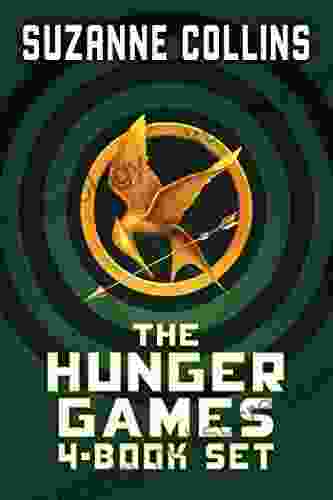
 Andy Cole
Andy ColeDive into the Fiery Ordeal and Mockingjay's Rebellion: An...
: A Captivating Dystopian Saga The...
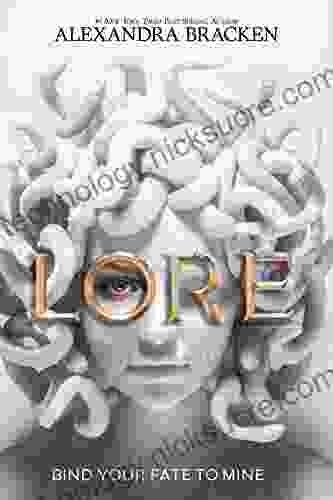
 Ernest Powell
Ernest PowellLore Alexandra Bracken: Unveiling the Mastermind Behind...
: In the vast expanse of contemporary...
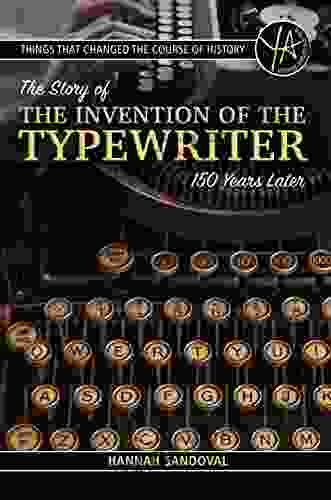
 T.S. Eliot
T.S. EliotThe Story of the Invention of the Typewriter: 150 Years...
The typewriter, a...
4.6 out of 5
| Language | : | English |
| File size | : | 21000 KB |
| Text-to-Speech | : | Enabled |
| Screen Reader | : | Supported |
| Enhanced typesetting | : | Enabled |
| Print length | : | 320 pages |


